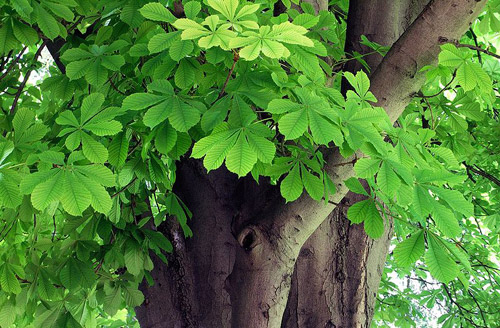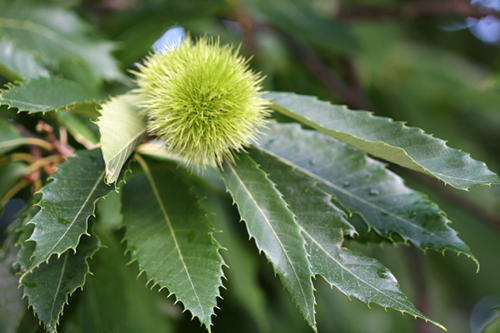
Welcome to another Monday morning edition in the a-z of plants your horse can’t eat. Today’s plant is one that sounds like it should be horse-friendly, but the Horse Chestnut is far from friendly to its namesake.
A Little About Horse Chestnut
Aesculus hippocastanum is also called Horse Chestnut. This is a shrub or a tree that grows into quite a large tree. Leaves have leaflets and are arranged oppositely and yellowish flowers cluster at branch ends. Bright green fruit is prickly and contains hard, glossy brown seeds.
How Dangerous Is It?
This plant is unpalatable to equines and only a threat during drought conditions. However they are commonly use for landscaping and lining roads as they have deep roots and air cleaning properties. They contain glycosides and perhaps a narcotic alkaloid which is highly toxic and horses should not be grazed near them.
The nuts, seedlings, leaves, bark, honey and buds of this plant are toxic and can be fatal to equines.

What To Look For
You know your animal the best, so you should know when something is amiss. Horse Chestnut toxicity symptoms include gastrointestinal upset, difficulty swallowing, blurred vision, irregular heartbeat and convulsions.
Learn More
Be sure to check out the Horse Chestnut page to learn more about the plant and while you are at it why not check out more toxic plants?
*It should be noted that I’m not a veterinarian. This information is written specifically for horses and should be used for reference purposes only. If you think your horse has eaten something toxic call your vet right away.
